- Acronym Guide
- AAM
- ABS
- AC
- ACAS
- ADS-B
- AFAC
- AGL
- AI
- AIM
- ALS
- AM
- AMA
- ANSP
- AOI
- APPI
- AUV
- AUVSI
- ARPAS-UK
- ASTM
- ATC
- BVLOS
- CAA
- CAAC
- CAB
- CAP
- CASA
- CATT
- CBO
- CBR
- CBRN
- CDMA
- CDR
- CFI
- CFR
- CIR
- COA
- COMINT
- CORS
- COTP
- COTR
- CPTED
- CV
- C2
- DAA
- DAS
- DEM
- DFI
- DFS
- DGCA
- DHS
- DOD
- DPA
- DPEs
- DRG
- DRO
- DSM
- DSMX
- DSP
- DSSS
- DTM
- EASA
- EFT
- EO
- EOD
- EO/IR
- ELINT
- EMI
- ESC
- EVLOS
- eVTOLs
- FAA
- FCC
- FCS
- FHSS
- FICCI
- FLIR
- FOB
- FOV
- FPS
- FPV
- GBDAA
- GCP
- GCS
- GDPR
- GML
- GNSS
- GPS
- GSD
- GVC
- HDR
- HOGE
- IACRA
- ICAO
- ICS
- IMU
- INS
- IR
- ISA
- ISR
- ITU
- JARUS
- LAAMS
- LAANC
- LAATM
- LAI
- LAS
- LBA
- LIDAR
- LOS
- LSALT
- MAC
- MAVLink
- MLIT
- MMS
- MSL
- MTOM
- NDAA
- NCSL
- NFZ
- NIST
- NMEA
- NOTAM
- NPA
- NPRM
- NTIA
- OBIA
- OEM
- OFDM
- OGI
- OOP
- PAS
- PASM
- PAV
- PCV
- PdM
- PEC
- PIC
- PID
- PIPL
- PLD
- PM
- PN
- PPK
- PPS
- PSM
- PTZ
- PWM
- UAM
- UAOP
- UAS
- UASTM
- UAV
- UCAVs
- UHD
- UHF
- USV
- UTM
- RAIM
- RCC
- RCS
- RFI
- ReOC
- RePL
- RMS
- ROI
- RPAS
- RPC
- RTH
- RTN
- RTK
- SaR
- SAR
- SARP
- SBAS
- S.Bus
- SBIR
- SEDENA
- SfM
- SFOC
- SIGINT
- SLAM
- SMS
- SOP
- SORA
- STANAG
- STTR
- STK
- sUAS
- TCAS
- TCCA
- TFR
- TIN
- TLM
- TOF
- TP
- TPS
- TSA
- VHF
- VLOS
- VTOL
Drone Acronyms
What is UAV (Unmanned Aerial Vehicle) & How Does it Work?
By
Jacob StonerTable Of Contents

Definition
An Unmanned Aerial Vehicle (UAV) is an aircraft that operates without a human pilot on board. Instead, it is controlled remotely by a pilot or autonomously by onboard computers.
UAV Relevance to the Industry
UAVs have revolutionized the way many industries operate. In agriculture, UAVs can monitor crop health, manage irrigation, and optimize planting. In the construction industry, they provide aerial views of sites for planning and progress monitoring. In emergency response, UAVs assist in search and rescue operations, delivering real-time data from inaccessible or hazardous areas. The versatility and efficiency of UAVs make them indispensable tools in modern technology and operations.
How Does a UAV Work?
Unmanned Aerial Vehicles (UAVs), commonly known as drones, operate through a combination of advanced technologies that enable them to fly autonomously or be remotely controlled. Here’s a breakdown of how a typical UAV works:
1. Components and Structure
- Airframe: The structural framework of the UAV, which can be fixed-wing or rotary-wing (e.g., quadcopters).
- Propulsion System: Includes motors and propellers that generate thrust to lift the UAV and control its movement.
- Power Source: Usually a battery or, in some larger UAVs, a fuel-powered engine.
- Sensors and Cameras: Used for navigation, obstacle detection, and data collection, including cameras, GPS, accelerometers, gyroscopes, and more.
2. Flight Control System
- Autopilot: An onboard computer system that manages the UAV’s flight path, speed, and altitude. It processes input from various sensors to maintain stable flight.
- Remote Control: A ground-based controller that sends commands to the UAV. This can be a dedicated remote control unit or a mobile device with a control app.
3. Communication Systems
- Data Link: A communication link that allows the UAV to send data to and receive commands from the ground control station. This can include real-time video feed, telemetry data, and control signals.
- GPS Navigation: Utilizes global positioning system satellites to determine the UAV’s precise location and assist in autonomous navigation.
4. Operational Phases
- Takeoff: The UAV can be launched manually by the operator or autonomously using pre-programmed flight plans.
- Flight: During flight, the UAV follows the programmed route or responds to real-time commands from the operator. The flight control system ensures stability and corrects any deviations.
- Data Collection: Depending on its purpose, the UAV may collect various types of data using onboard sensors and cameras. This data can be transmitted back to the ground station in real-time.
- Landing: The UAV can return to a predefined landing point autonomously or be guided manually by the operator for a safe landing.
5. Applications and Use Cases
- Aerial Photography and Videography: Capturing high-quality images and videos from the air.
- Surveillance and Security: Monitoring large areas for security purposes or during emergency response.
- Agriculture: Surveying crops, analyzing soil health, and monitoring livestock.
- Delivery Services: Transporting goods, medical supplies, and other items.
Example in Use
“Agricultural UAVs equipped with multispectral sensors can quickly identify crop stress, allowing farmers to address issues before they affect yield.”
Frequently Asked Questions about UAVs
1. What does a UAV do?
Answer: A UAV, or Unmanned Aerial Vehicle, performs a wide range of functions depending on its design and the needs of its operators. Generally, UAVs are used for:
- Surveillance and Reconnaissance: Monitoring and gathering data over large areas.
- Agriculture: Monitoring crop health, managing irrigation, and spraying fertilizers or pesticides.
- Search and Rescue: Locating missing persons or assessing disaster zones.
- Delivery Services: Transporting goods, medical supplies, and packages.
- Photography and Filmmaking: Capturing aerial images and videos for media production.
- Scientific Research: Conducting environmental monitoring and wildlife tracking.
- Military Operations: Conducting intelligence, surveillance, and reconnaissance missions.
2. What is the difference between a drone and a UAV?
Answer: The terms “drone” and “UAV” are often used interchangeably, but there is a subtle difference:
- UAV (Unmanned Aerial Vehicle): This term specifically refers to the aircraft itself, which operates without a human pilot on board. It emphasizes the vehicle’s capability to fly autonomously or be remotely controlled.
- Drone: This is a broader term that can refer to any unmanned vehicle, whether it operates in the air, on land, or in water. In the context of aviation, a drone usually refers to the entire system, including the UAV, the control systems, and the communication infrastructure.
3. What are the three major types of UAV?
Answer: The three major types of UAVs are classified based on their size, range, and capabilities:
- Small UAVs (sUAVs):
- Characteristics: Typically weigh less than 55 pounds (25 kg), have short to medium range, and are often used for commercial, recreational, and some military applications.
- Examples: DJI Phantom, Parrot Anafi.
- Tactical UAVs:
- Characteristics: Medium-sized, used primarily by the military for tactical operations, capable of carrying heavier payloads and longer endurance than sUAVs.
- Examples: RQ-7 Shadow, MQ-5B Hunter.
- Strategic UAVs:
- Characteristics: Large, long-range UAVs designed for strategic missions, including intelligence, surveillance, and reconnaissance (ISR) over large areas and extended periods.
- Examples: MQ-9 Reaper, RQ-4 Global Hawk.
These categories help in understanding the diverse applications and capabilities of UAVs in various industries.
For examples of these acronyms visit our Industries page.
As the CEO of Flyeye.io, Jacob Stoner spearheads the company's operations with his extensive expertise in the drone industry. He is a licensed commercial drone operator in Canada, where he frequently conducts drone inspections. Jacob is a highly respected figure within his local drone community, where he indulges his passion for videography during his leisure time. Above all, Jacob's keen interest lies in the potential societal impact of drone technology advancements.
Pros
Cons
You may like
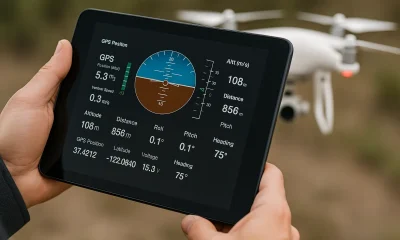

What is TLM (Telemetry) & How Does it Work?
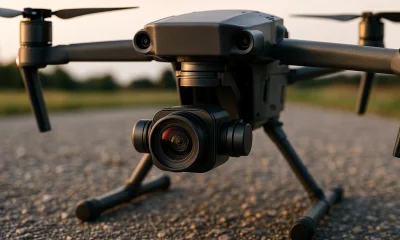

What is PTZ (Pan-Tilt-Zoom) & How Does it Work?
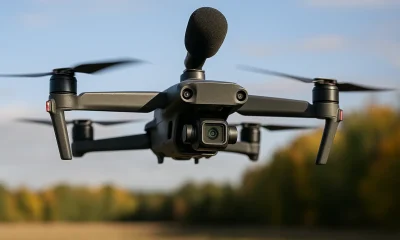

What is PAS (Passive Acoustic Sensor) & How Does it Work?


What is OGI (Optical Gas Imaging) & How Does it Work?
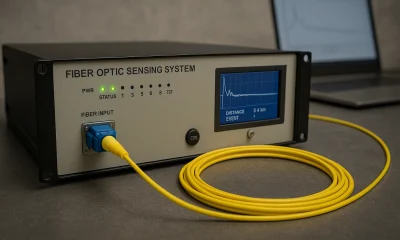

What is DAS (Distributed Acoustic Sensing)?
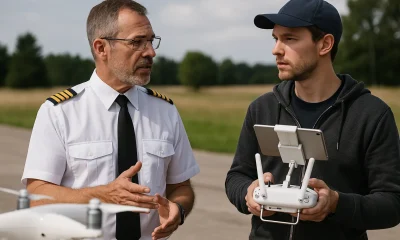

What is CFI (Certified Flight Instructor) & How Does it Work?